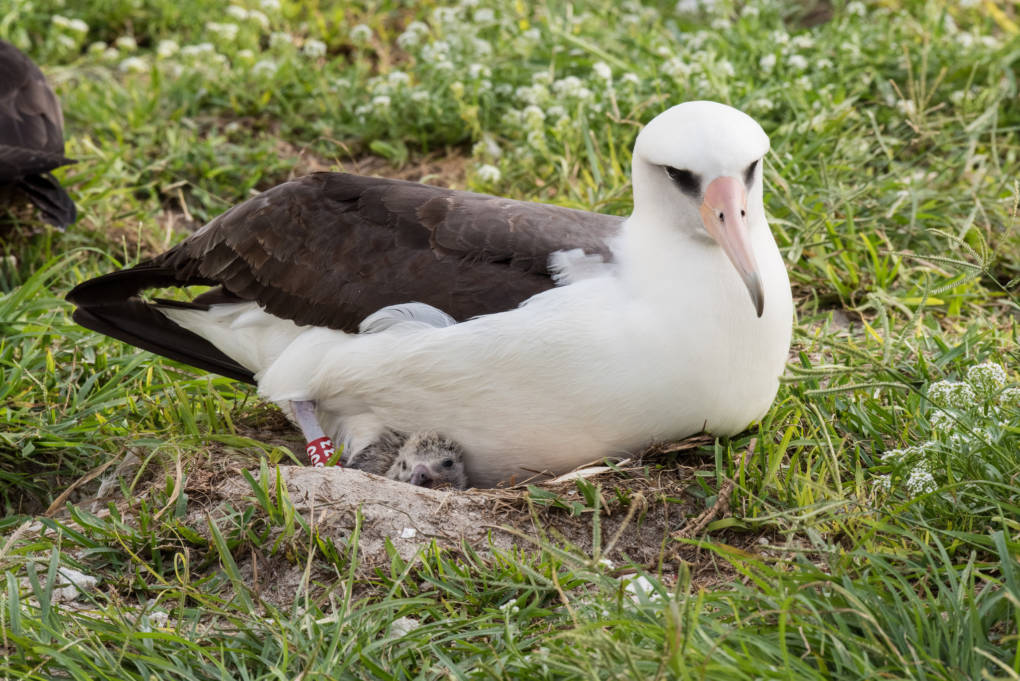“What’s thought to be an old albatross is in the 50s so she’s already beaten the odds in that way,” says Taylor.
Even in her old age, she’s a supermom. She’s laid at least 37 eggs in her lifetime. But she can’t do it alone. She and Akeakamai take turns protecting their offspring.
For about half the year, one member of the pair will be away, for weeks at a time, to feed in the Pacific Ocean, sometimes making it as far as the California coast.
“One is almost always at sea while the other protects the chick. So it takes enormous coordination between the two to make it work. And it also takes trust that your partner will have taken care of your chick.”
For Wisdom and her mate, they pulled it off again. Kelly Goodale is a wildlife biologist on Midway Atoll where Wisdom and Akeakamai lives. And she has some exciting news about the couple.
”As of February 6, last Tuesday, their chick hatched. So she was there for the hatching. And she stuck around for a few days when Akeakamai came back from his feeding trip.”
Then, Wisdom left to gather food for her family. She’s expected to return in a week or two.
“These two birds work so well together and really rely on each other in order to be successful and to raise a chick. It’s so inspiring,” says Goodale.
From the standpoint of an outsider, it seems like these two birds have the ideal relationship. No word yet on how they deal with disagreements.
The sound in the radio story was recorded by Jean Matuska. You can watch her video here. For more information about Wisdom, you can visit her Facebook page here or the U.S. Fish and Wildlife Service blog here.


